2011
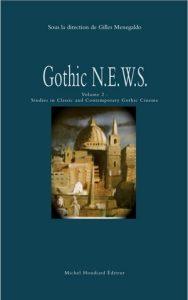 Contemporary Asian horror films seem to be particularly fond of resorting to various techniques of visual recording. This paper focuses in more detail on two such relatively recent films: a Hong Kong production Abnormal Beauty (2004), directed/produced by Oxide and Danny Pang and a Thai film Shutter (2004), directed by Banjong Pisanthanakun and Parkpoom Wongpoom, both of which feature professional photographers as main protagonists and resort consequently to the notion of photography as a key concept for the narrative structure and the films’ visual organisation. The paper will examine the ways the two films exploit photography’s specific relation to death and the afterlife, raising the question whether the theoretical discourse of photography can potentially “westernise” the narrative technique of an Asian film.
Contemporary Asian horror films seem to be particularly fond of resorting to various techniques of visual recording. This paper focuses in more detail on two such relatively recent films: a Hong Kong production Abnormal Beauty (2004), directed/produced by Oxide and Danny Pang and a Thai film Shutter (2004), directed by Banjong Pisanthanakun and Parkpoom Wongpoom, both of which feature professional photographers as main protagonists and resort consequently to the notion of photography as a key concept for the narrative structure and the films’ visual organisation. The paper will examine the ways the two films exploit photography’s specific relation to death and the afterlife, raising the question whether the theoretical discourse of photography can potentially “westernise” the narrative technique of an Asian film.
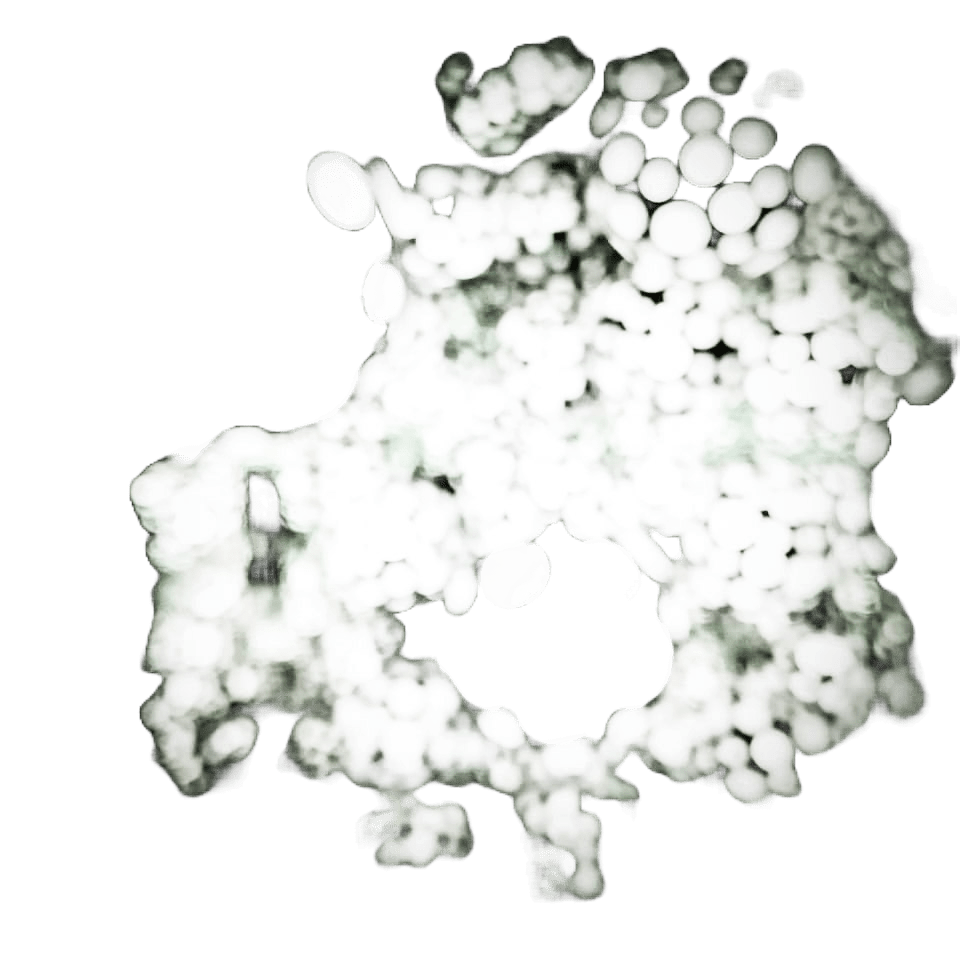
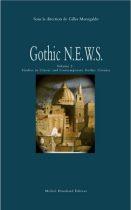
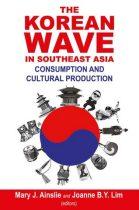
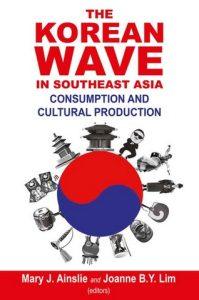 This paper examines Korean influences on contemporary Thai cinema in terms of genre development, narrative structure and co-production. It will discuss the emergence of the strong “masculinised” heroine in Thai comedies, re-configuration of the horror, comedy and action thriller genres, changes in the narrative strategies of 21st century Thai films, and the results of creative co-production between Thailand and Korea.
This paper examines Korean influences on contemporary Thai cinema in terms of genre development, narrative structure and co-production. It will discuss the emergence of the strong “masculinised” heroine in Thai comedies, re-configuration of the horror, comedy and action thriller genres, changes in the narrative strategies of 21st century Thai films, and the results of creative co-production between Thailand and Korea.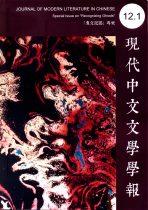
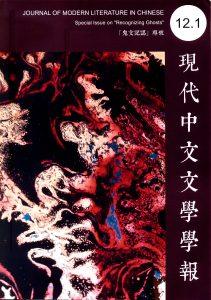 With their themes of ghosts, violence and monstrosity, horror films have been instrumental in capturing the ghostly returns of collective trauma. Thai horror, unsurprisingly, also cannot disassociate itself from history. Through their ghosts and, more recently, through their turn to “body horror,” contemporary Thai horror films come to terms with the “wounds” in the country’s social fabric. The strategies of archivization of Thai history and cultural memory used in these films vary, since some traumatic incidents in Thai history have been denied the right to be remembered by the state apparatus. Other, less politically-repressed events, such as murders, accidents, or cases of gross negligence are meticulously reconstructed from available authentic sources and reproduced in Thai horror films, which take on the function of becoming the archives of Thai popular memory. This article discusses Thai horror films’ strategies of archivization of Thailand’s past.
With their themes of ghosts, violence and monstrosity, horror films have been instrumental in capturing the ghostly returns of collective trauma. Thai horror, unsurprisingly, also cannot disassociate itself from history. Through their ghosts and, more recently, through their turn to “body horror,” contemporary Thai horror films come to terms with the “wounds” in the country’s social fabric. The strategies of archivization of Thai history and cultural memory used in these films vary, since some traumatic incidents in Thai history have been denied the right to be remembered by the state apparatus. Other, less politically-repressed events, such as murders, accidents, or cases of gross negligence are meticulously reconstructed from available authentic sources and reproduced in Thai horror films, which take on the function of becoming the archives of Thai popular memory. This article discusses Thai horror films’ strategies of archivization of Thailand’s past.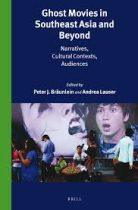
 Thai spiritualism, attributed by some anthropologists to the hybridization, consumerization and politicization of Thai popular religion, can be seen as having significant consequences for the study of Thai horror cinema, since it allows for both a metaphorical (modern) and literal (pre-modern) reading of its ghost movies. On the literal level, these movies function as a fictional retelling of real or hypothetically possible spiritual encounters, and by tapping into the personal experience of their audience they can be found particularly frightening. On another hand, if the filmmakers stray too far from the audience’s expectations they risk getting seriously criticized for producing an “unconvincing” film narrative. Adding to this, the movies themselves are frequently being produced and promoted in a variety of supernatural contexts, including making offerings to the spirits, employing mediums and fortune tellers, or documenting instances of haunting on set. Last but not least, as a peculiar form of spiritual exchange, movies (though not necessarily horror movies) are commonly being screened at shrines and temples to appease local spirits and deities, or as a form of post-mortem entertainment for the recently deceased during the wake. This paper discusses these and other examples of the mutual relationship between Thai horror movies and Thai spiritualism and suggests a connection between the popular animistic, mediumistic and religious practices of the Thais and their love of horror cinema.
Thai spiritualism, attributed by some anthropologists to the hybridization, consumerization and politicization of Thai popular religion, can be seen as having significant consequences for the study of Thai horror cinema, since it allows for both a metaphorical (modern) and literal (pre-modern) reading of its ghost movies. On the literal level, these movies function as a fictional retelling of real or hypothetically possible spiritual encounters, and by tapping into the personal experience of their audience they can be found particularly frightening. On another hand, if the filmmakers stray too far from the audience’s expectations they risk getting seriously criticized for producing an “unconvincing” film narrative. Adding to this, the movies themselves are frequently being produced and promoted in a variety of supernatural contexts, including making offerings to the spirits, employing mediums and fortune tellers, or documenting instances of haunting on set. Last but not least, as a peculiar form of spiritual exchange, movies (though not necessarily horror movies) are commonly being screened at shrines and temples to appease local spirits and deities, or as a form of post-mortem entertainment for the recently deceased during the wake. This paper discusses these and other examples of the mutual relationship between Thai horror movies and Thai spiritualism and suggests a connection between the popular animistic, mediumistic and religious practices of the Thais and their love of horror cinema.
 While folk horror has never been identified as exclusive to western cinema, most studies of the topic have so far been strongly aligned with western world-views, philosophies and methodologies. This makes it difficult to apply their findings to films made in non-Christian non-western countries, such as Thailand. This article discusses Banjong Pisanthanakun’s film Rang Song (The Medium) (2021) as a case in point to demonstrate how folk horror operates as a mode in Thai cinema. Building on the existing studies and modifying the current definitions of folk horror to apply them to the Thai cultural context, the article argues that Thai folk horror narratives are steeped in representations of the urban–rural divide that pit metropolitan Bangkok against low-income provinces (in particular, the northeastern region of Isan) and reflect on cultural tensions related to ethnicity and class.
While folk horror has never been identified as exclusive to western cinema, most studies of the topic have so far been strongly aligned with western world-views, philosophies and methodologies. This makes it difficult to apply their findings to films made in non-Christian non-western countries, such as Thailand. This article discusses Banjong Pisanthanakun’s film Rang Song (The Medium) (2021) as a case in point to demonstrate how folk horror operates as a mode in Thai cinema. Building on the existing studies and modifying the current definitions of folk horror to apply them to the Thai cultural context, the article argues that Thai folk horror narratives are steeped in representations of the urban–rural divide that pit metropolitan Bangkok against low-income provinces (in particular, the northeastern region of Isan) and reflect on cultural tensions related to ethnicity and class.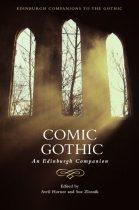
 Humour has always been an integral part of Thai horror, a cinematic genre characterized by its internal hybridity and fluidity. Despite some attempts to align local productions with Western or Japanese horror, the majority of Thai horror films continue to mix scares with laughter, frequently featuring the ‘unholy trinity’ of ghosts, slapstick comedy and the kathoey – a Thai third gender category, often depicted in such productions in terms of the Gothic body that is simultaneously the site of ridicule and fear. This article examines the work of two directors who have embraced this approach – Poj Arnon and Yuthlert Sippapak. While Poj Arnon’s films have often been branded as tasteless and nonsensical, each of his 30-something productions has made a healthy profit, attesting to their popularity. In contrast, Yuthlert Sippapak’s works have baffled audiences at several international festivals and the director himself has been promoted as an inscrutable auteur. This article focuses on two major film series by these directors – Hor Taew Tak by Poj Arnon, and Buppah Rahtree by Yuthlert Sippapak. The article uses these films to illustrate a distinction between Thai horror comedies and Thai popular horror films, arguing that the comic elements are an indispensable part of their Gothic framework and a feature characteristic of Thai popular horror film in general.
Humour has always been an integral part of Thai horror, a cinematic genre characterized by its internal hybridity and fluidity. Despite some attempts to align local productions with Western or Japanese horror, the majority of Thai horror films continue to mix scares with laughter, frequently featuring the ‘unholy trinity’ of ghosts, slapstick comedy and the kathoey – a Thai third gender category, often depicted in such productions in terms of the Gothic body that is simultaneously the site of ridicule and fear. This article examines the work of two directors who have embraced this approach – Poj Arnon and Yuthlert Sippapak. While Poj Arnon’s films have often been branded as tasteless and nonsensical, each of his 30-something productions has made a healthy profit, attesting to their popularity. In contrast, Yuthlert Sippapak’s works have baffled audiences at several international festivals and the director himself has been promoted as an inscrutable auteur. This article focuses on two major film series by these directors – Hor Taew Tak by Poj Arnon, and Buppah Rahtree by Yuthlert Sippapak. The article uses these films to illustrate a distinction between Thai horror comedies and Thai popular horror films, arguing that the comic elements are an indispensable part of their Gothic framework and a feature characteristic of Thai popular horror film in general.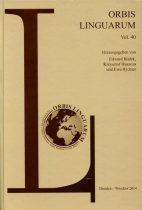
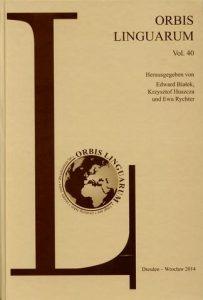 This article argues that the negative portrayal of medical professionals in contemporary Thai horror is to a certain extent reminiscent of the tensions between the official and popular attitudes to Western bio-medicine and Traditional Thai Medicine (TTM) in Thai society. The article argues that medical doctors, together with other members of the professional community, such as for instance architects, or journalists, represent a relatively high level in the Thai social hierarchy which can be openly criticized without much fear that the films will be cut by censors. Last but not least, the article will look in more detail on Paween Purijitpanya’s debut feature The Body #19 (2006). Set within the less-than-glamorous world of medical professionals, the film toys with the concept of the mental disease (schizophrenia), which in traditional Thai folk medicine has consequently been attributed to spiritual possession. This dual spiritual/medical nature of the mental disease in Thai popular perception, has allowed the filmmakers to create a film that can be seen as simultaneously repeating and breaking the established Thai horror formulas. At the same time, while directing our attention to the notion of disease, the film offers an interesting, though subtle representation of the disintegration of the traditional hierarchical Thai society and its values.
This article argues that the negative portrayal of medical professionals in contemporary Thai horror is to a certain extent reminiscent of the tensions between the official and popular attitudes to Western bio-medicine and Traditional Thai Medicine (TTM) in Thai society. The article argues that medical doctors, together with other members of the professional community, such as for instance architects, or journalists, represent a relatively high level in the Thai social hierarchy which can be openly criticized without much fear that the films will be cut by censors. Last but not least, the article will look in more detail on Paween Purijitpanya’s debut feature The Body #19 (2006). Set within the less-than-glamorous world of medical professionals, the film toys with the concept of the mental disease (schizophrenia), which in traditional Thai folk medicine has consequently been attributed to spiritual possession. This dual spiritual/medical nature of the mental disease in Thai popular perception, has allowed the filmmakers to create a film that can be seen as simultaneously repeating and breaking the established Thai horror formulas. At the same time, while directing our attention to the notion of disease, the film offers an interesting, though subtle representation of the disintegration of the traditional hierarchical Thai society and its values.
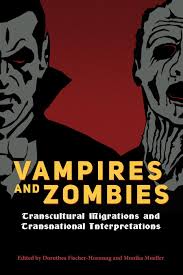 Only five out of all theatrically released Thai horror films before 2014 can be said to feature zombies at all and even then the identity of the creatures in question is not always consistent with what the international horror audiences have come to expect of a zombie icon. This begs the question as to why filmmakers in Thailand refuse to see zombie films as particularly frightening fantasies worthy of investment. It cannot be said that the local horror-film industry is diffident toward the monstrous or the uncanny, as indeed the typical horror film is almost completely dedicated to supernatural plots. Nor can it be said that the larger Thai film industry has but a small regard for the horror genre, as the Thai movie audience’s almost insatiable love of horror has convinced financial backers that horror films are a safe investment. Why, then, are Western-style zombies so rarely able to shuffle their way into the pantheon of Thai cinematic monsters?
Only five out of all theatrically released Thai horror films before 2014 can be said to feature zombies at all and even then the identity of the creatures in question is not always consistent with what the international horror audiences have come to expect of a zombie icon. This begs the question as to why filmmakers in Thailand refuse to see zombie films as particularly frightening fantasies worthy of investment. It cannot be said that the local horror-film industry is diffident toward the monstrous or the uncanny, as indeed the typical horror film is almost completely dedicated to supernatural plots. Nor can it be said that the larger Thai film industry has but a small regard for the horror genre, as the Thai movie audience’s almost insatiable love of horror has convinced financial backers that horror films are a safe investment. Why, then, are Western-style zombies so rarely able to shuffle their way into the pantheon of Thai cinematic monsters?
 This article revisits two of the most iconic Thai monstrosities, phi pop and phi krasue, whose changing representation owes equally as much to local folklore, as to their ongoing reinterpretations in popular culture texts, particularly in film and television. The paper discusses two such considerations, Paul Spurrier’s P (2005) and Yuthlert Sippapak’s Krasue Valentine (2006), films that reject the long-standing notion that animistic creatures belong in the countryside and portray phi pop and phi krasue’s adaptation to city life. Though commonplace, animistic beliefs and practices have been deemed incompatible with the dominant discourses of modernization and urbanization that characterise twenty-first century Thailand. Creatures like phi pop and phi krasue have been branded as uncivilised superstition and ridiculed through their unflattering portrayals in oddball comedies. This article argues that by inviting these monsters to relocate to contemporary Bangkok, Spurrier and Sippapak redefine their attributes for the modern urban setting and create hybrids by blending local beliefs and cinematic conventions. The creatures’ predatory character is additionally augmented by the portrayal of the city as itself vampiric. The article therefore reads these predatory spirits in parallel with the metaphor of the female vampire – a sexually aggressive voracious creature that threatens male patriarchal order and redefines motherhood.
This article revisits two of the most iconic Thai monstrosities, phi pop and phi krasue, whose changing representation owes equally as much to local folklore, as to their ongoing reinterpretations in popular culture texts, particularly in film and television. The paper discusses two such considerations, Paul Spurrier’s P (2005) and Yuthlert Sippapak’s Krasue Valentine (2006), films that reject the long-standing notion that animistic creatures belong in the countryside and portray phi pop and phi krasue’s adaptation to city life. Though commonplace, animistic beliefs and practices have been deemed incompatible with the dominant discourses of modernization and urbanization that characterise twenty-first century Thailand. Creatures like phi pop and phi krasue have been branded as uncivilised superstition and ridiculed through their unflattering portrayals in oddball comedies. This article argues that by inviting these monsters to relocate to contemporary Bangkok, Spurrier and Sippapak redefine their attributes for the modern urban setting and create hybrids by blending local beliefs and cinematic conventions. The creatures’ predatory character is additionally augmented by the portrayal of the city as itself vampiric. The article therefore reads these predatory spirits in parallel with the metaphor of the female vampire – a sexually aggressive voracious creature that threatens male patriarchal order and redefines motherhood.
 This article discusses the construction of phi pop as the monstrous figure of Thai folklore and proposes to read phi pop films as a classic example of Thai folk horror – a local sub-genre of horror whose main convention seems to be the representation of the insurmountable rural/urban divide. The films take different approaches to the topic, and the cinematic phi pop emerges as a figure of both comedy and horror, although in newer productions where the creature is no longer isolated in a remote village but rather follows rural migrants into the city, its portrayals are significantly more unnerving. The chapter provides a brief overview of Thai beliefs concerning the origin and characteristics of the creature and examines four films representative of most common approaches to Thai folk horror: Ban Phi Pop (Srisawat 1989), P (Spurrier 2005), Mekong Hotel (Weerasethakul 2012) and Pob (Ratanaruang 2018).
This article discusses the construction of phi pop as the monstrous figure of Thai folklore and proposes to read phi pop films as a classic example of Thai folk horror – a local sub-genre of horror whose main convention seems to be the representation of the insurmountable rural/urban divide. The films take different approaches to the topic, and the cinematic phi pop emerges as a figure of both comedy and horror, although in newer productions where the creature is no longer isolated in a remote village but rather follows rural migrants into the city, its portrayals are significantly more unnerving. The chapter provides a brief overview of Thai beliefs concerning the origin and characteristics of the creature and examines four films representative of most common approaches to Thai folk horror: Ban Phi Pop (Srisawat 1989), P (Spurrier 2005), Mekong Hotel (Weerasethakul 2012) and Pob (Ratanaruang 2018).